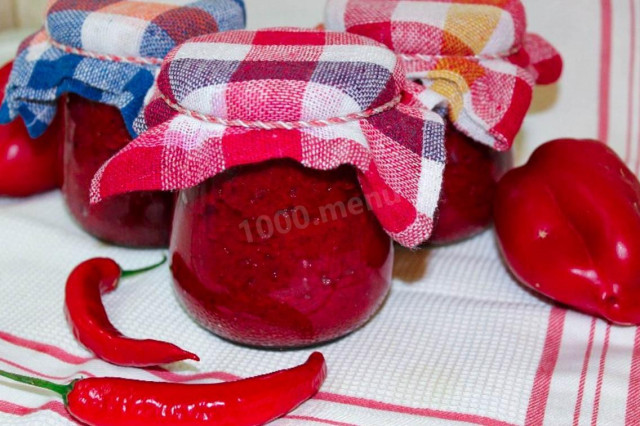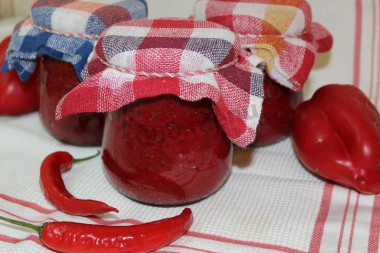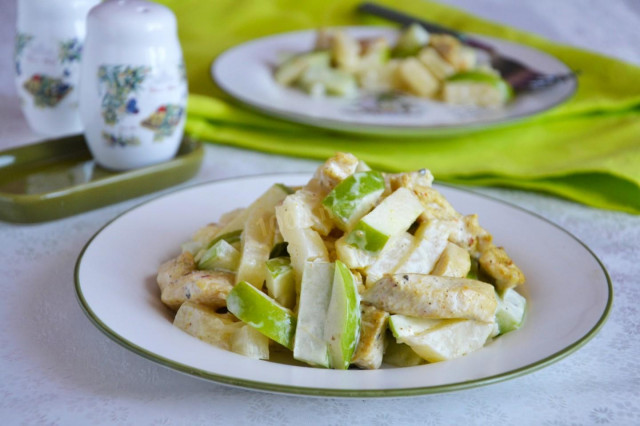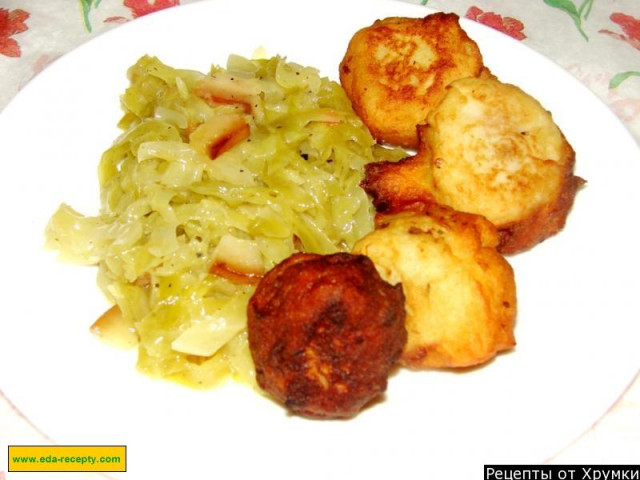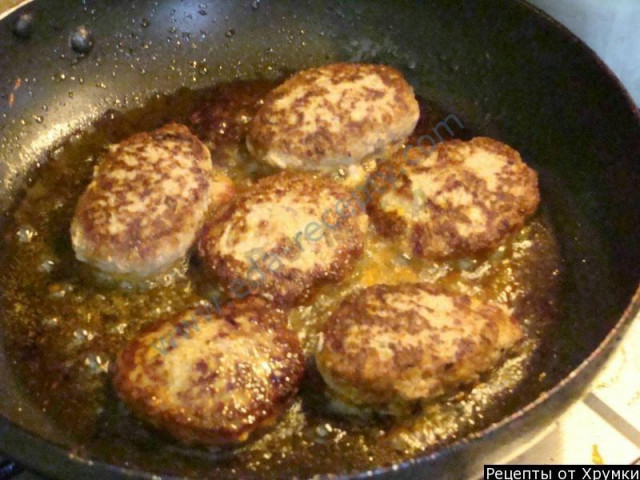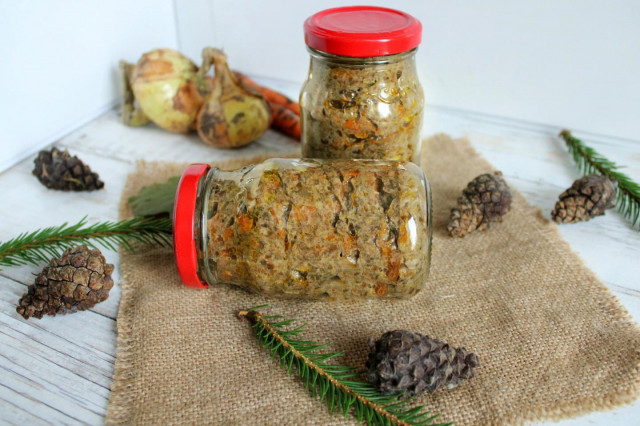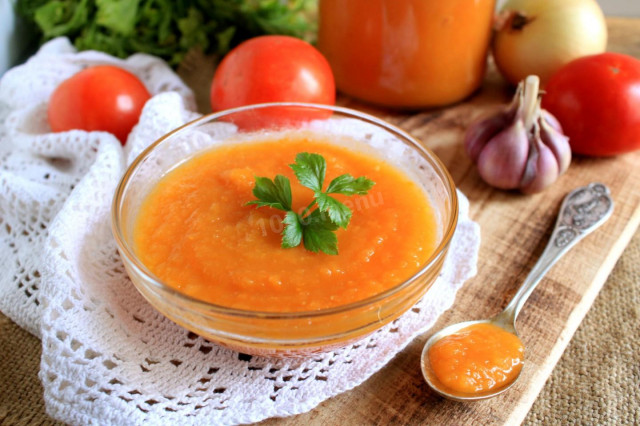Composition / ingredients
Step-by-step cooking
Step 1:

How to make beetroot caviar for the winter through a meat grinder? Cut Bulgarian pepper into cubes. Fry.
Step 2:
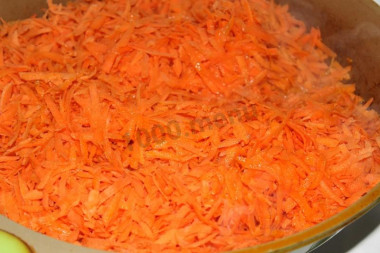
Grate carrots on a coarse grater. Fry.
Step 3:
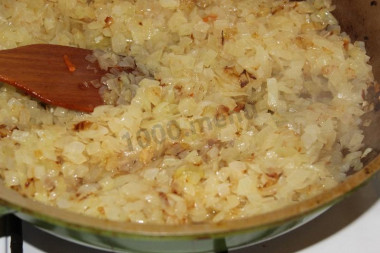
Diced onion and fry separately too.
Step 4:
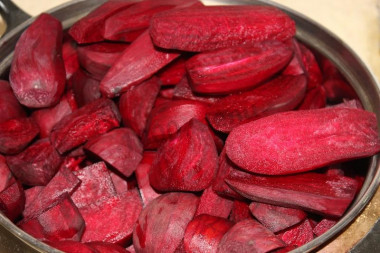
Peel the beets and cut them into cubes.
Step 5:
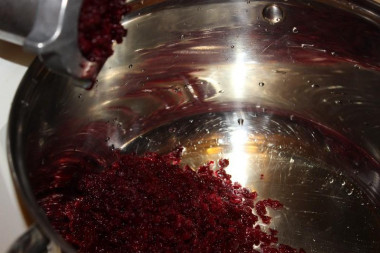
Pass the beetroot through a meat grinder with a fine grate. Transfer the mass to a deep dish with a thick bottom. Simmer with vegetable oil (100g) and 3 tbsp vinegar for 30 minutes.
Step 6:
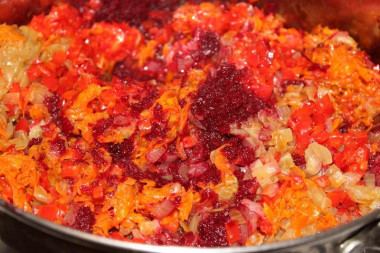
Add all the fried vegetables separately to the beetroot and mix.
Step 7:
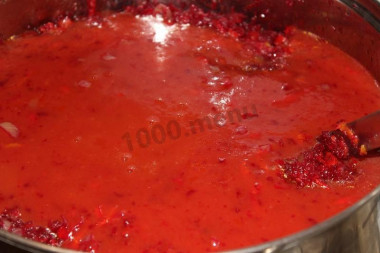
Pour in tomato juice and add tomato paste.
Step 8:
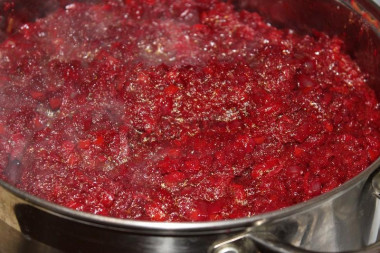
Add salt and mix. Simmer for 30 minutes under the lid.Do not forget to stir so that the caviar does not burn.
Step 9:
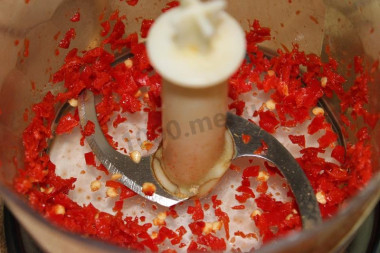
Chop the bitter pepper in the bowl of a blender and add to the caviar 10 minutes before the end of cooking.
Step 10:
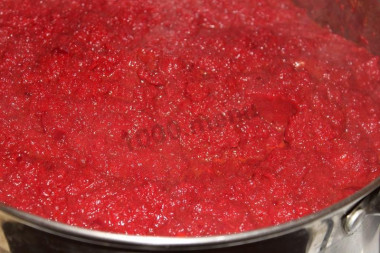
Break the mass in the pan with a blender to a puree-like state. We languish on a quiet light for another 5 minutes. And we put the hot caviar in sterile jars. Sterilize 0.5 l. cans for 30 minutes. Add 1 tsp of vinegar to each jar and roll it up, turn it over until it cools.
Step 11:
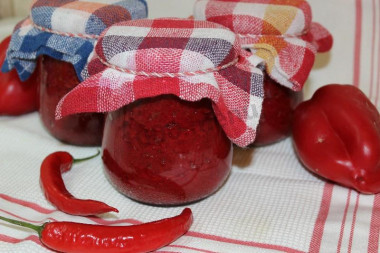
This caviar can be stored in the apartment. It does not need to be hidden in a cold place.
Step 12:
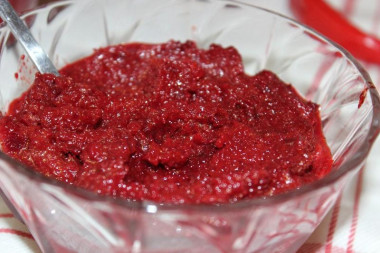
In winter we will open the jar and enjoy it! It's very tasty! You can cook this caviar in the summer just to eat. If you like it, you can then close it for the winter. Bon appetit!
Vinegar in recipes, unless otherwise specified by the author, is added by default at a concentration of 9%.
Use oil with a high smoking temperature for frying! Any oils are useful only until a certain temperature is reached - the point of smoking, at which the oil begins to burn and toxic substances, including carcinogens, are formed in it.
Unrefined oils, with rare exceptions, have a low smoking point. There are a lot of unfiltered organic particles in them, which quickly begin to burn.
Refined oils are more resistant to heating, and their smoking point is higher. If you are going to cook food in the oven, on a frying pan or grill, make sure that you use oil with a high smoking point. The most common of the oils with a high smoking point: refined varieties of sunflower, olive and grape.
Tomato paste in this recipe can be replaced with tomatoes in their own juice, fresh tomatoes or ketchup.
Caloric content of the products possible in the composition of the dish
- Beetroot - 40 kcal/100g
- Dried beetroot - 278 kcal/100g
- Boiled beets - 49 kcal/100g
- Sweet pepper - 27 kcal/100g
- Carrots - 33 kcal/100g
- Dried carrots - 275 kcal/100g
- Boiled carrots - 25 kcal/100g
- Wine vinegar (3%) - 9 kcal/100g
- Vinegar 9% - 11 kcal/100g
- Balsamic vinegar - 88 kcal/100g
- Apple vinegar - 14 kcal/100g
- Vinegar - 11 kcal/100g
- Vegetable oil - 873 kcal/100g
- Tomato paste - 28 kcal/100g
- Salt - 0 kcal/100g
- Onion - 41 kcal/100g
- Chili pepper - 40 kcal/100g
- Tomato juice - 21 kcal/100g

